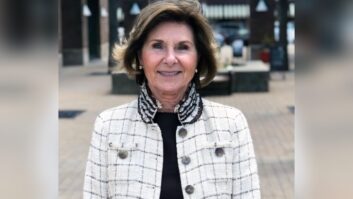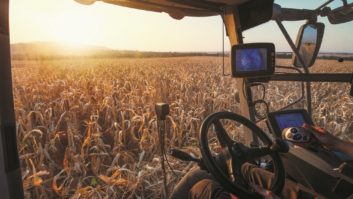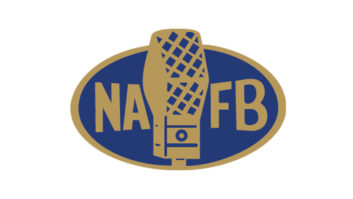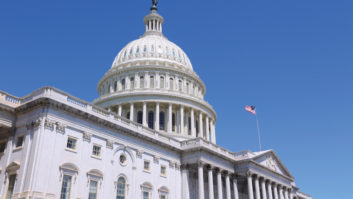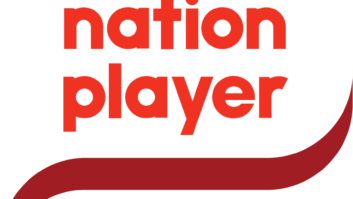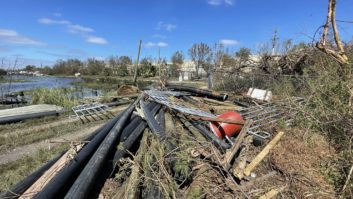The National Association of Farm Broadcasting held its annual conference in November. I asked Tom Brand and Brian Winnekins to provide highlights.
The NAFB’s mission is to serve the agricultural community and create value for its broadcast member stations and networks. It is a liaison between farm broadcast stations and networks and the agri-marketing community of companies and agencies.
Brand was executive director of NAFB for 12 years, through the end of December; the association is seeking his successor. Colleen Callahan is serving in an interim capacity.
Winnekins is a past president of NAFB. He owns WRDN Radio in Durand, Wis., where he serves as a farm broadcaster for the greater Pepin County agricultural community.
Radio World: Congratulations on your conference in Kansas City. How many people attended?
Tom Brand: We had the strongest attendance at this year’s NAFB Convention in several years, with more than 760 registered for the convention and our Trade Talk event. Attendance in 2019 and 2021 was approximately 630 people, with 2023 registration around 730.
RW: How would you characterize the health of farm radio broadcasting?
Brand: Total NAFB membership has surpassed 900 in 2023. This includes 185 farm broadcasters heard and seen on more than 1,600 radio and television stations, as well as on satellite radio and television and online.
Advertisers recognize the connection farm broadcasters have with their audience and the consistent connection with listeners. The strength of farm broadcasting is solid today, and the outlook for the future remains strong.
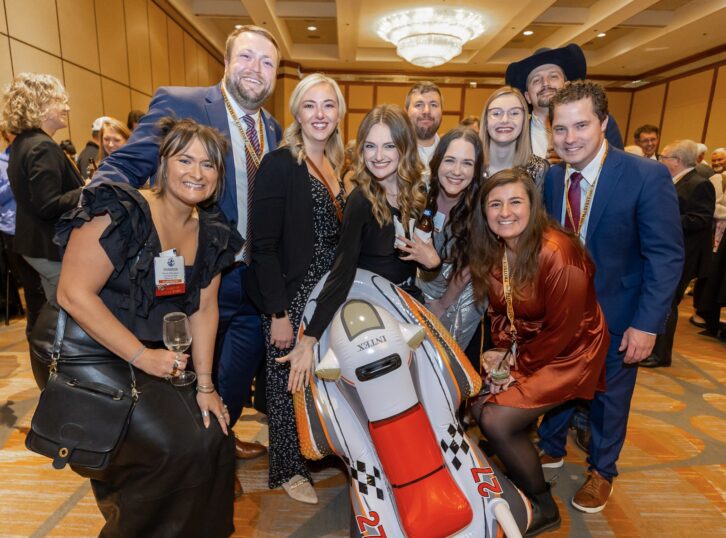
RW: What were the most important issues or concerns, particularly for radio members, at the conference?
Brand: The AM Radio in Every Vehicle Act continues to be of interest to our members. We were delighted to have FEMA’s Manny Centeno and NAB’s Shawn Donilon as part of a discussion panel, moderated by Brian, to kick off this year’s meeting.
Attendance at the session was strong, and engagement from the members with both panelists showed the continued importance AM radio has to our industry, as well as keeping audiences in rural America connected not only for agriculture programming but for emergency information.
During my address to the membership at our all-member meeting, I stressed the importance of personal involvement — reaching out to members of Congress and their staff, and either thanking them for their support or asking them to support the AM Radio in Every Vehicle Act. I reminded them that this is the first time in the association’s nearly 80-year history that we’ve endorsed a piece of legislation and that they are the conduit to those lawmakers.

RW: Brian, what did you hear from NAB or others at the conference about the outlook for that bill’s passage?
Brian Winnekins: Shawn Donilan from NAB said that as of mid-November there were 40 senators as co-sponsors of the bill and that there are 10 additional Republican senators waiting to co-sponsor the bill if 10 more Democrats come on board. He felt that if a vote was held the bill would pass both houses. There were also 182 co-sponsors in the House. [In early December an attempt by Senate sponsors to pass the bill by unanimous consent was not successful, blocked by Sen. Rand Paul. —Ed.]
Donilan encouraged broadcasters to continue to use the “Depend on AM” campaign on their websites and on air, and that a new PSA was being developed.
RW: Is there a chance that the legislation could be tweaked to include specific receiver standards?
Winnekins: Both Manny Centeno and Donilan said that receiver standards were discussed but that it was believed that by adding the receiver standards to the bill now, it would make it difficult for the bill to pass. They both said that receiver standards are an important part of the issue and it would be something that should be addressed after the initial bill is passed.
RW: What message did Manny Centeno bring to your members?
Winnekins: Manny discussed the importance of AM radio to FEMA. He told us that before FEMA began hardening some of the 50 kW PEP stations, FEMA asked DHS to look into AM radio before FEMA spent that money. He also stressed that FEMA believes that while using new technology like cellphone alerts that AM radio is an important part of emergency communications.
He mentioned that FEMA had talked with auto manufacturers about removing AM and the car companies had offered to put portable radios inside the glove compartments of vehicles, but that FEMA wanted AM radio on the dash and easy to access.
He also talked about how broadcasters need to be in contact with their local emergency management officials and build relationships with them so when a local emergency happens, broadcasters are in the loop. He talked about the lack of communication from emergency management to broadcasters during the fires in Maui as an example of what happens when broadcasters and emergency management don’t have a relationship. He also talked about the importance of broadcast station owners to improving and evolving AM radio.
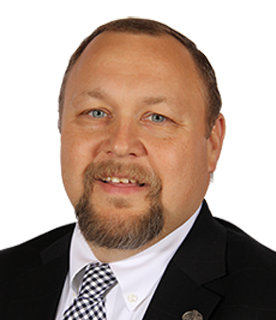
I brought up the issue of man-made interference issues. My point was that it doesn’t matter if we still have AM and hardened AM PEP stations if the noise floor isn’t dealt with and the FCC doesn’t start enforcing the Parts 15 and 18 rules. It really won’t matter if AM and even FM is still in the dash as the public will not receive the emergency messages. Manny said that is a concern at FEMA and that FEMA has expressed this concern to the FCC.
As for interference to other vehicles caused by EVs, both Manny and Shawn said while there have been no reports of that yet, it’s something that needs to be investigated, especially the high-speed chargers.
Manny also called on broadcasters to partner with Spanish-language and religious broadcasters to raise the volume on industry-wide efforts to preserve AM radio. He was concerned that even if the bill passes now, it will be watered down in the future. He wants to see what we can do today to be strong, resilient and permanent.
RW: What else should readers know about the event or current concerns of your members?
Brand: We can share some specific research results with you in early 2024, but the preliminary results from third-party research company Aimpoint prove the connection that farmers and ranchers have with farm broadcasting.
Among those surveyed nationwide, 83% reported they listen five or more days per week specifically for ag news, ag markets and ag weather information. Over half those respondents listen over an hour per day; the average listener’s farm had 11 radios, with over half reporting that the number of radios on their farming operation was 20 radio or more. Farm broadcasters are consistently rated high for being credible, timely and accurate.






